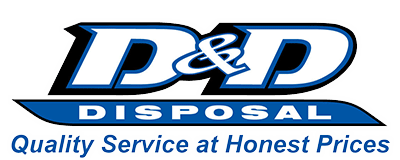 A basement is one of the most overlooked places in a home where you expect to find all kinds of gross such as cobwebs, accumulated dirt in corners, and damp spaces that create ideal conditions for mold to grow. Since you are the homeowner, it is your responsibility to ensure that all areas in your home are kept clean including the basement. This may seem a daunting task but it is worth your time and effort when you consider the results of having a clean basement. This article looks at some of the best ways to clean a basement.
A basement is one of the most overlooked places in a home where you expect to find all kinds of gross such as cobwebs, accumulated dirt in corners, and damp spaces that create ideal conditions for mold to grow. Since you are the homeowner, it is your responsibility to ensure that all areas in your home are kept clean including the basement. This may seem a daunting task but it is worth your time and effort when you consider the results of having a clean basement. This article looks at some of the best ways to clean a basement.
- Empty Your Basement
You need to dedicate a free day towards cleaning your basement so that you have enough time to handle all tasks. Start by taking off everything from your basement that is not plugged in or pinned down. You can choose to transfer them to another room before cleaning and then take them back afterward. However, if the weather allows, you can take your stuff outside to sort through everything. Use this time to get rid of the things that you do not regularly use or damp materials that could cause a mold problem in your basement.
The reason behind it is to put back fewer items than they were before to prevent the room from getting stuffy with things you do not need. You can divide your belongings into things you would like to keep, throw away, sell, or donate. It is important to check any clothing for droppings, holes, or signs of infestation before putting them back in your basement after cleaning.
- Assemble Your Cleaning Supplies
Different surfaces may require different tools and equipment so it is important to pack your cleaning supplies before getting started. If you are deep cleaning your basement then you need to gather the strongest supplies and cleaning equipment. You can use a heavy-duty dry or wet vacuum depending on the type of flooring in your basement. Other tools you need include mops, a large push broom, and great cleaning products. It is important to wear rubber gloves when cleaning your basement as it protects your hands from vigorous scrubbing and stronger cleaning solutions. You can complete your supply list with a soft bristle brush for stains and a microfiber cloth for light surfaces.
- The Cleaning Procedure
Start by scraping off any loose pieces from your crumbling drywall or foundation before putting any soap to work. However, if these areas require repair then it needs to be handled differently. You need to replace anything that looks weak or may cause additional problems if not addressed in time. You can start with a heavy-duty vacuum cleaner to collect all dirt and grime from your basement floor and walls. It is important to cover overlooked places such as the area around a drainage pipe or cracks in the floor as they are ideal places for mold to grow.
You can use a damp cloth to clean your walls starting from the bottom and work your way up in horizontal layers. Once you are done with the walls, you can now focus on cleaning your basement floor. It is advisable to use two mops as it makes you work faster and more efficiently. You do not have to wring out the same mop head when you can easily alternate between the two.
- Take Back Items You Want to Keep
The final step is to take back basement belongings that you want to keep. This process may be less tedious than the initial task of taking them out since you will have sorted things you want to keep, throw away, sell or donate. It is important to ensure that any damp clothing or material is completely dry before taking it back to the basement. Any items that remained plugged in or pinned down when cleaning the basement need to be cleaned dry to avoid any moisture build-up. Instead of stuffing things together, try to organize them in a way that you can see everything in its place. This helps to reduce poor ventilation and conditions that may be ideal for mold growth.
The type of cleaning products and equipment you will use to clean your basement may vary depending on the type of your flooring. The tools used to clean hard surfaces may be different from the ones used for cleaning soft fabric and other light surfaces. It is also important to check crawlspaces for mold, animal droppings and any other signs of unwanted surprises so that you can address it in time.

